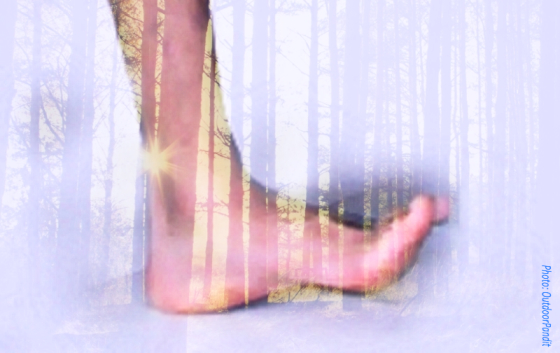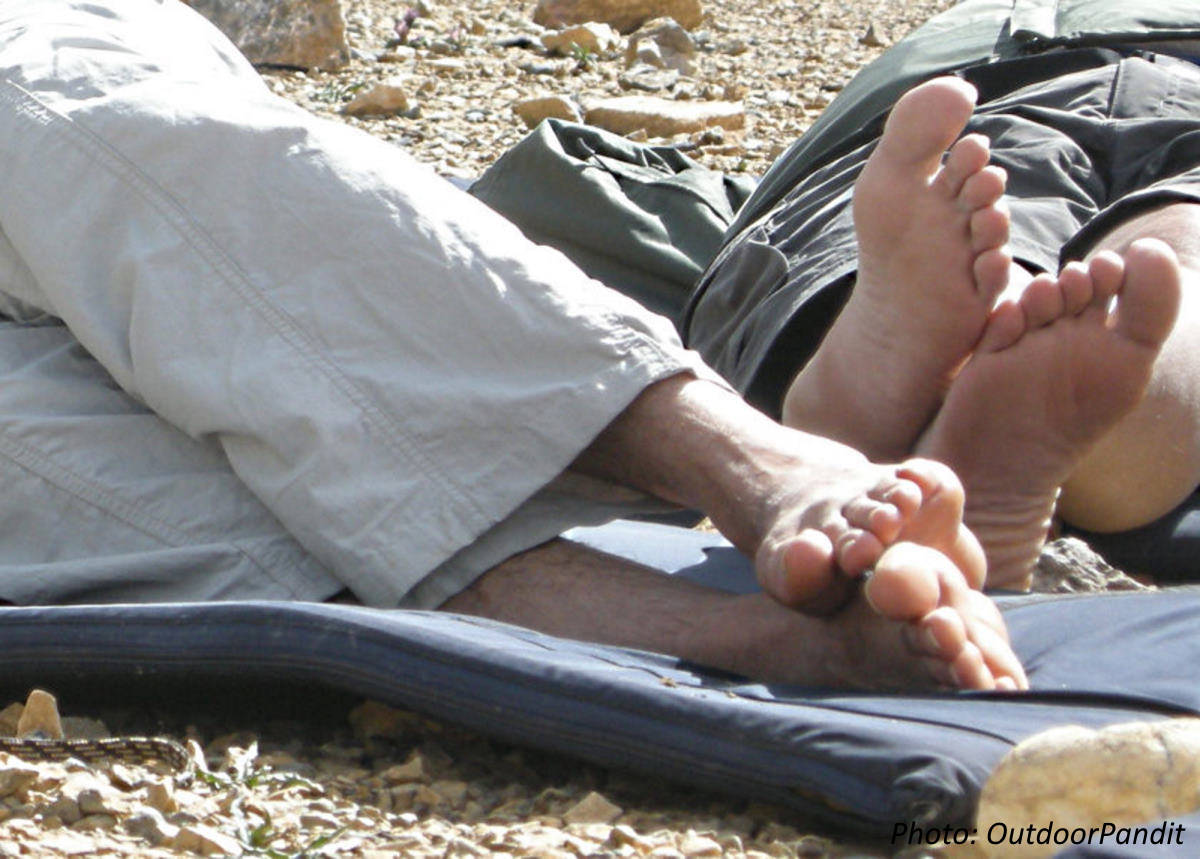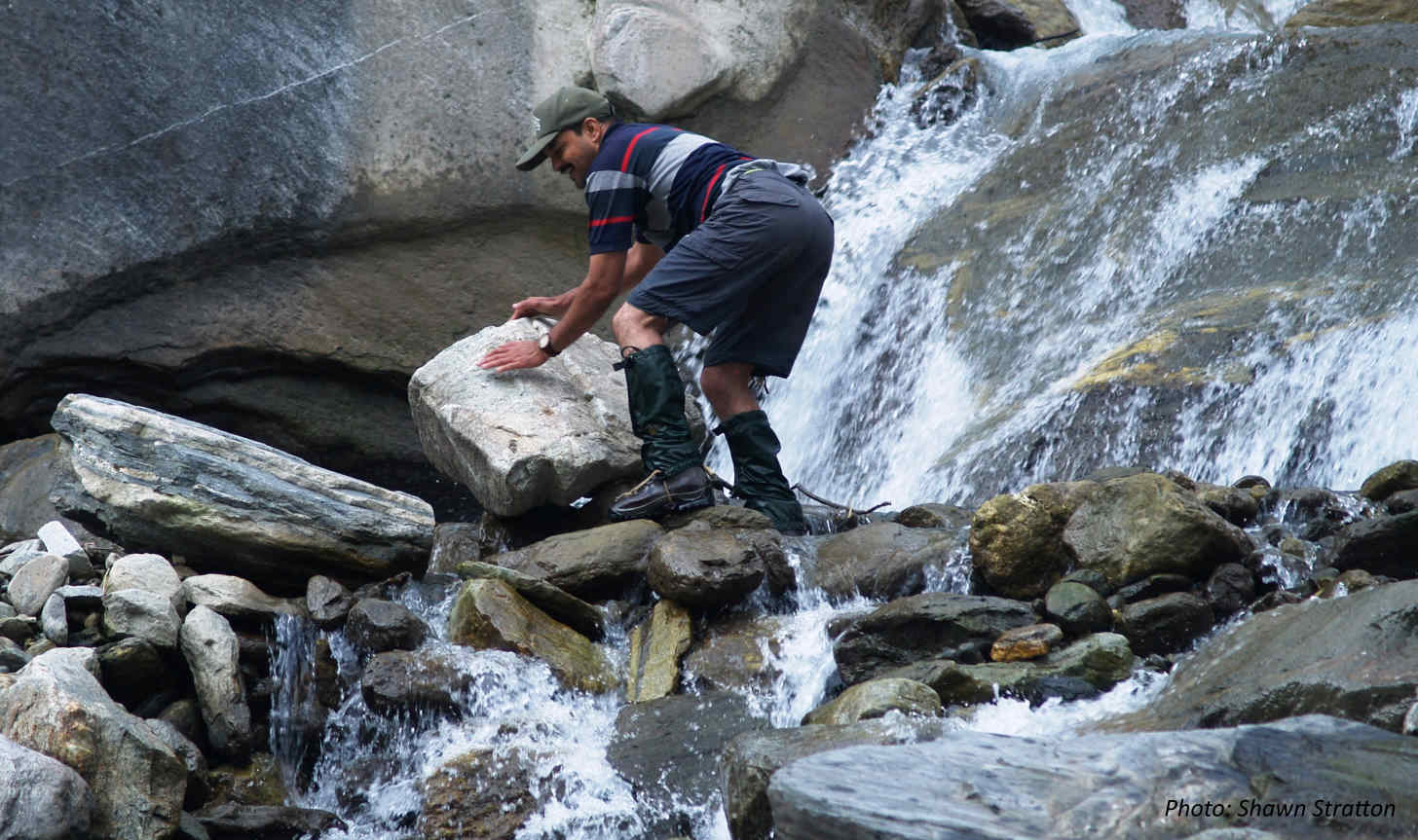* Take care of your feet and they will carry you far *
There are insidious ways in which a hiker’s feet can get affected. Dirt, tiny pebbles, tinier grit and lint from socks… all these are ‘hazards’ for feet. And then there’s ‘fashion’ in the form of toenails longer than what is advisable for hiking in boots that creates its own brand of problem. A barely discernable chafe on some part of the foot can slowly develop into a blister. The list goes on… Footcare involves being alive to such hazards, adopting a preventive stance, and attending to any problem as soon as it arises. Hikers need to be deliberate in the way they take care of their feet. Let’s look at some of these deliberate-care-of-feet actions.

Go with clean feet into a hike. Trim toenails so they do not rub against the inside of your boots, and do not easily gather dirt under them. On multi-day hikes, take a nail trimmer with you.
Dirt anywhere is good breeding ground for bacteria that create the smell on feet. Ditto dead skin that remains moist. And bacteria are the reason for the feet-stink which is termed by medics (who else?) as, ah, ‘bromodosis’! So, after a day’s hike when you remove your hiking boots, and before you put on camp shoes, have a look at your feet. Examine for dirt under toenails. Dig in between toes to remove muck (balled up lint and dirt). Examine sore spots and hot spots. Dry your feet.
I would strongly recommend repeating this whole process just before going to bed – and making it a habit. One more reason to do so is for spotting a tick or some other insect that has inexplicably breached the barriers of boots and socks. In the mountains, in addition to preventive aspects described above, thoroughly washing feet just before retiring for the day is the only way to finally drive away the unpleasant odour. Otherwise your tent mates may drive you away to seek sanctuary elsewhere!

Hiking Gaiters
This piece of personal gear is still a novelty for many, and its necessity is hotly debated.
Gaiters are abrasion resistant nylon garments that cover a part of boots and lower part of the legs. The leggings part may extend up to just above ankles or all the way up to calves. Hiking gaiters provide some degree of protection against external elements like branches, rocks and snow. When worn along with crampons or microspikes, they also provide considerable protection from the spikes.

On trails in many parts of the world there are pack animals being driven up and down for ferrying loads of either tourists or locals. These animals tend to churn up a lot of dust. I have experienced that when I wear gaiters there is remarkably less amount of dust that gets onto my socks and into my boots. This drastically reduces chances of me getting a hotspot. Also, I can coolly walk through a patch of mud and slush on the trail secure in the knowledge that none of it is getting on to my pants or into my boots. This is significant because I have seen hikers take extreme measures to avoid such slush; e.g., a hiker may try to hop from stone to half-submerged stone in slush, or they go to the side of the trail in an effort to find drier ground to walk on. In this process, the hiker increases the chances of slipping and falling on the wet stones, and if they have chosen to walk on the outside of the trail which is overlooking a steep drop then we have the risk of a serious fall down the slope in case of a slip. When one walks through slush and snow on a trail no trail-bypasses are created, thus lessening impact on the natural environment.
It can get hot wearing gaiters so one can consider using them along with shorts or ‘three-quarters’. And one can loosen the calf-string on gaiters to let some air in from the top.

Avoid walking barefoot in a camp. Even a small cut can take a long time to heal on a hike: wounds take longer time to heal at higher altitudes, and when feet are ensconced in hiking boots for the better part of the day. Also, there is the risk of infection with all sorts of microbes thriving happily inside your hiking boots’ sweaty and smelly atmosphere.
Click here for the next post ‘Blisters’.
Click here for my post on hiking boots.
Click here for my post on hiking socks.

Very useful specially for people prone to fungus attacks like me. Excessive sweating was main cause.
Hey Kedar, yeah I believe that the combination of preventive actions help. There is incredible diversity in how our feet function/suffer when sweating inside footwear, so it takes time to judge what all exactly works for one’s feet… Thanks for writing in! Would be cool to get to know tips from an experienced person like you…